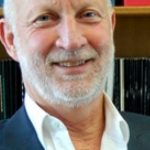Teens Complete HSC While in Juvenile Correctional Centre

2015 was a tough year for more than 70,000 year 12 students, with HSC exams to prepare for, assignments to hand in and major artworks to complete.
Earlier this week, the results of this year’s HSC were released – with thousands celebrating their achievements with friends and family.
But for two students in particular, the achievement is particularly impressive.
This is because they managed to complete their HSC whilst serving time at Frank Baxter Juvenile Justice Centre – a correctional facility for young offenders.
Most of the youth at the Centre have had troubled upbringings; many dealing with family breakdowns, drug and alcohol problems and mental health issues from an early age.
On top of this, behavioural problems and learning difficulties have made it particularly difficult for some to attend school regularly, let alone finish their HSC.
On the Road to Success
The two boys cannot be named for legal reasons – but they shared their experiences with a Channel 9 reporter earlier this week.
One of them described getting mixed up with the wrong crowd and having ‘a lot of bad influences’ around him, while the other said he began engaging in criminal activity from the age of 13.
Getting involved with the Girrakool School during their time in custody proved to be a step in the right direction, with one of the boys saying that finishing his HSC was ‘the biggest achievement of [his] life.’
Girrakool is a unique school which provides ‘education and vocational training programs for male juvenile offenders.’ It is located in Kariong, on the Central Coast of New South Wales, in close proximity to the Frank Baxter Juvenile Justice Centre – which is the largest juvenile justice centre in the state, accommodating approximately 120 males aged between 16 and 21.
The Centre aims to ‘create a positive learning environment and to facilitate the student’s successful integration into their community.’
Girrakool is just like a normal school – its students don uniforms bearing the school’s logo, classrooms consist of desks and chairs, and normal subjects are taught including maths, English and history. But there is one major difference – its students are locked back up in their cells at the end of each day.
There are strict protocols at Girrakool to prevent unruly or dangerous behaviour; even stationery must be surrendered upon leaving the classroom.
Each year, a small number of the Centre’s students sit the HSC – joining many other young offenders across the state.
One former inmate said that doing the HSC in prison was a positive experience, because ‘you’ve got all the time in the world, almost, to do it…you’re practically left doing nothing if you don’t want to do schooling.’
Students also benefit from smaller class sizes – limited to six pupils and one teacher – which makes it easier to concentrate on work. Individual learning plans are tailored to the needs of particular students, giving them the greatest chance of success.
Education the Key to a Better Life
For young offenders, finishing school can help to get a job once released by investing them with skills and training to secure employment or continue their education.
Studies have also shown that education reduces reoffending by increasing a person’s employability and self-esteem. One American study found that re-incarceration rates ‘were nearly cut in half for former inmates with a full-time job compared to similar inmates who are unemployed.’ Educated and employed former inmates are also less likely to be reliant on government benefits.
Another American study found that ‘a $1 investment in prison education reduced incarceration costs by $4 to $5 during the first three years post-release,’ and that ‘employment after release was 13 percent higher among prisoners who participated in either academic or vocational education programs than those who did not.’
These studies suggest that educating inmates benefits not only them, but also society as a whole through reduced crime and associated costs, and less reliance on the welfare system.






